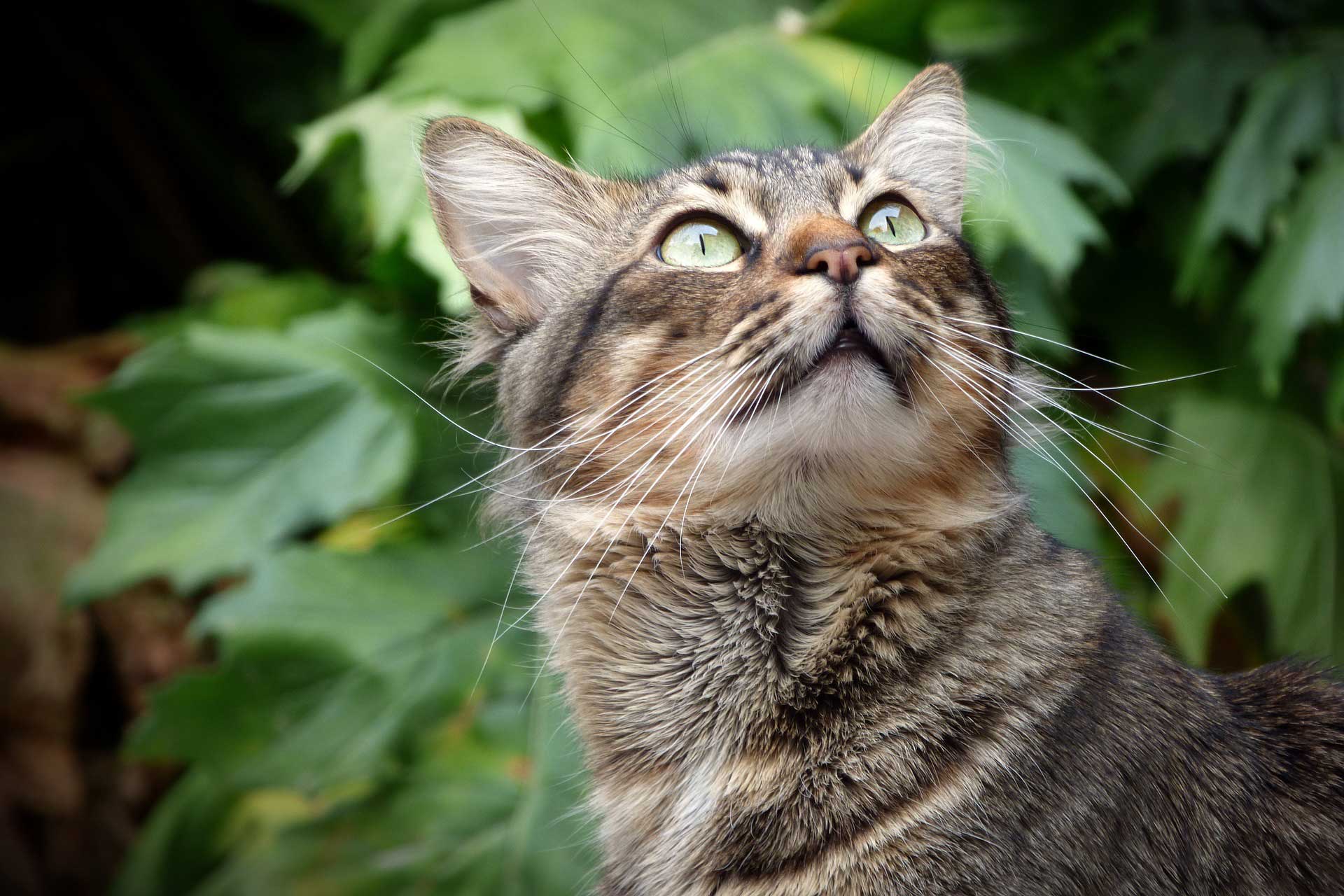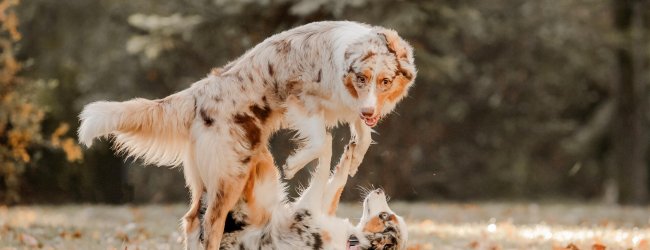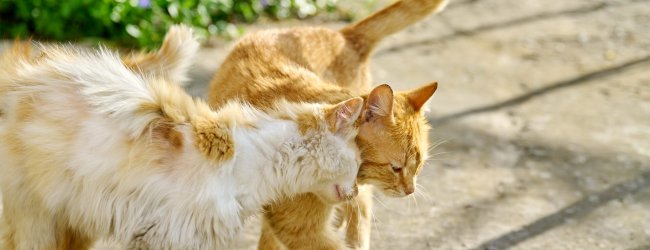Why Do Cats Eat Grass & How Does It Affect Them?
Is your cat eating grass? Learn why, what to do about it, and how to keep your cat safe when they're out and about.
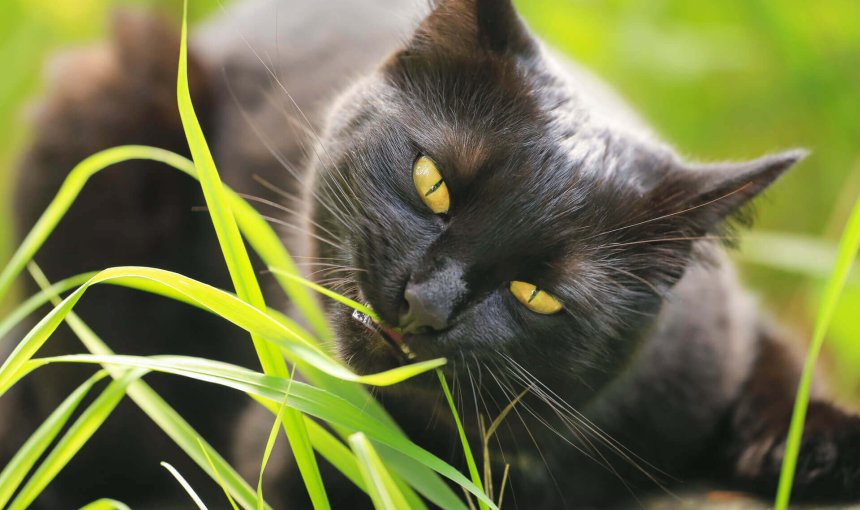
Fact. When you live with a cat, you’ll come across some question-raising behaviors. What is it, for example, with their tongue sometimes just casually sticking out? And why do cats eat grass?
Most quirks are just cute, but in this case, it’s good to know if your cat eating grass is safe. Find out why it’s perfectly normal, and what to watch out for. Plus, discover some natural grass alternatives for your cat – like cat grass, a filling, fiber-rich snack for your feline friend.
While you’re here, find out if your cat suffers from a pollen allergy and what you can do about it.
- Why do cats eat grass?
- When to be concerned about your cat eating grass
- Cat eating grass? 3 tips to keep them safe
- Can cats eat grass? (Safely?)
- Is cat grass the same as catnip?
- Other cat grass benefits you’ll come across
- How to create your very own cat grass garden at home
- What is a good alternative to offering cats eating grass?
- Top reasons why your cat is eating grass
So it’s official – cats eat grass. You’ve likely already seen this from your own furball. But now, thanks to a survey from the University of California Davis Veterinary School of Medicine, you can see the bigger picture too:
- 89% of cats ate grass six or more times throughout their lives
- 11% of cats were never observed eating grass
- 91% of the time, cats appear in good health before eating grass
- 27% of cats vomit frequently after eating grass or other foliage1
This shows that nearly all cats eat grass – and are typically A-OK when doing so. A widely-believed (but not 100% accurate) explanation for why cats eat grass is that it helps them vomit if they got sick or poisoned. But that’s not always the case. The researchers found that, after eating grass, most cats do not throw it up – or show any signs of illness1. Cats can be purrfectly healthy, and still eat grass. So that brings us to the question – why do cats eat grass anyway?
Why do cats eat grass?
In short, cats eat grass because its comes naturally to them and can support their health – in the same way eating leafy greens helps us humans stay healthy.
Researchers aren’t 100% sure why exactly cats eat grass – but one of the primary reasons may be rooted in your cat’s evolutionary history.2 In many ways, your cat’s digestive system, appetite, and instincts haven’t changed much from their wild ancestors. And in nature, wild cats tend to eat grass after they’ve eaten prey – which may cause them to vomit out the indigestible parts of the food they’ve just eaten.
Here are 5 reasons why cats eat grass:
- Cats actually lack the stomach enzymes needed to break down and digest grass. As a result, it sometimes… comes back up. And together with it comes other stuff they can’t digest, like hairballs or inedible parts of prey such as fur or bones. We know, eww. But it’s good for them!
- The fiber found in grass supports digestion and can help relieve constipation.
- Anxious or stressed cats may find that chomping on grass helps calm their nerves. A bit like chewing gum for felines.
- Cats may eat grass as a source of vitamins and minerals, such as folic acid (B9), that they may not be getting elsewhere.
- Eating grass may help your cat get rid of internal parasites (or at least, this may be a leftover instinct from your cat’s ancestors)2.
Plants like grass contain fiber and other nutrients that are good for cats.
When to be concerned about your cat eating grass
If your cat is eating grass every day or vomiting blood, there is definitely cause for concern.
⚠️ Warning: Munching on grass every day might indicate problems with your cat’s digestive system.
The more trouble they have digesting their food, the more they will crave grass in an attempt to clear it out. On the other hand, your feline might, eventually, stop eating altogether.
Find out what to do if your cat won’t eat.
Note: If your cat is vomiting blood, it is possible that they’ve ingested toxins, possibly in the form of pesticides or other chemicals found outside. Should this be the case, don’t hesitate and take them to the vet ASAP!
Cat eating grass? 3 tips to keep them safe
Even though your cat eating grass on occasion is generally no cause for concern, there are certain steps you should take to ensure your cat’s safety.
1. Beware of pesticides.
If you have a garden (a.k.a. your cat’s mini-empire) make sure it’s a cat-friendly one:
- make sure not to use any insecticides or herbicides
- check for any toxic plants that might be growing there (more on that below)
2. Provide cat grass at home.
If your cat is used to roaming the whole neighborhood, it gets trickier to avoid pesticides and other dangers. A good tip? Don’t let them eat anything and everything they come across.
Of course, that’s much easier said than done. A better option is providing cat grass at home, which you know is safe to eat. But what is cat grass in the first place?
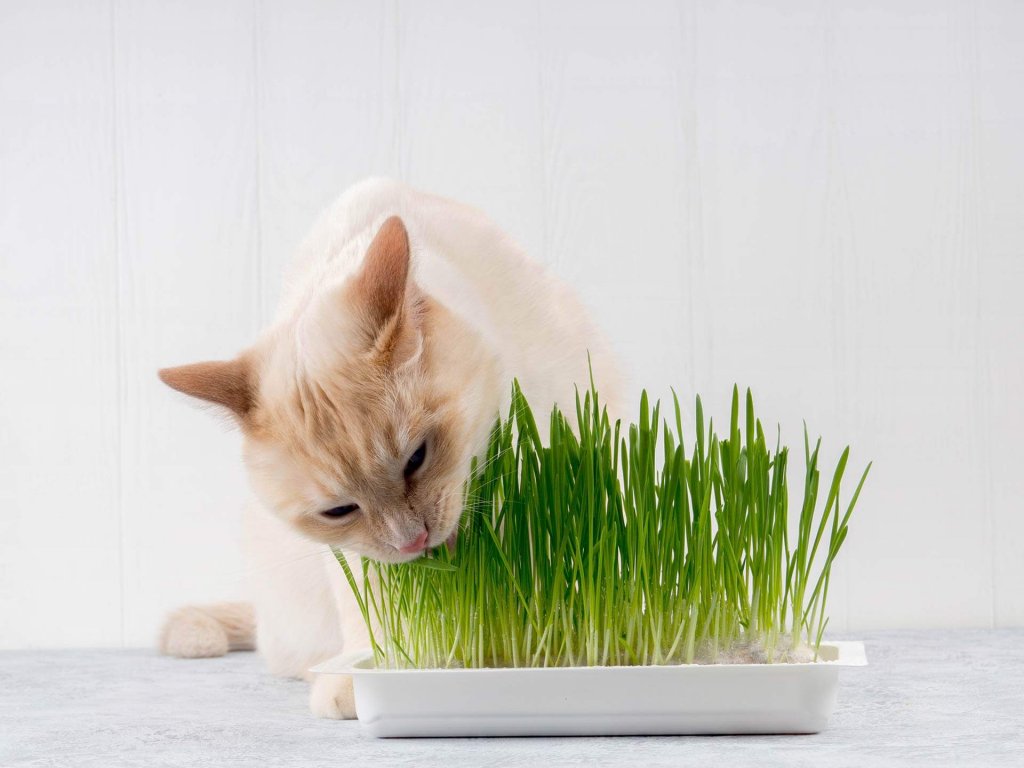
Cat grass seeds, usually oat, barley or wheat, should be available at most pet stores. You can also grow it yourself in pots or outside – a fancy alternative to the greens sprouting next to busy roads or on dog-marked territory.
Typically, cat grass varieties grow quite fast and are easy to take care of – and they thrive in both indoor and outdoor environments.
Cat grass is generally considered safer for cats to eat than outdoor grass. This is because regular grass outside might contain trace amounts (or more) of pesticides and other toxic substances like snail bait. So if your cat has the tendency to nibble on grass after meals, cat grass is an excellent safe option.
Usually, your local pet store will have cat grass kits, which include seeds, soil, and a potting container. So all you need to do is to water them regularly and provide ample sunlight. Within a week or so, your cat will have their own safe little garden of nibbles – and you can redirect them away from your houseplants or other flowers, which may be poisonous to them.
3. Keep your cat away from toxic plants.
If you keep your cat indoors, make sure to provide them with cat grass as well and remove all toxic plants that they might nibble on. Whether your cat spends a lot of time outdoors or indoors, it’s useful to know this list of common toxic plants:
- Amaryllis
- Dieffenbachia (also known as Dumb Cane)
- Lilies
- Heartleaf Philodendron (also known as horsehead philodendron)
- Aloe plant
- Sago palm
The list goes on, so make sure all your plants are non-toxic to cats before bringing them home.
Ingesting toxic plants can induce anything from stomach bleeding to liver failure, and be deadly.
You could also get informed on indoor plants that are safe for cats – so you can create an elegant green space in your home that also keeps your feline friend happy.
Can cats eat grass? (Safely?)
So if you’re wondering whether cats can eat grass, in short: yes, and it’s rooted in their natural instincts. Cat grass is perfectly safe for them to consume when grown specifically for your cat to eat.
You should also keep your plants and grass free from pesticides, chemicals and toxic substances to keep your cat safe. Or consider a natural, cat-friendly alternative if you’re concerned about bugs and pests. Like, say, planting catnip near your cat grass.
Is cat grass the same as catnip?
Cat grass and catnip might sound similar, but they’re both completely different plants3:
- Cat grass – as the name suggests – refers to grass varieties that are safe to consume for cats. These might include types like wheat, barley, and oats. Cats chew on these grass blades for nutritional and digestive benefits, but it doesn’t have the same (rather entertaining) effect on them as catnip.
- Catnip (Nepeta cataria), on the other hand, is a member of the mint family. It contains a compound called nepetalactone, which can have different effects on your cat. When they encounter catnip, either by sniffing, licking, or playing with it, cats might show signs of hyperactivity or roll around, rub themselves against you, or purr excessively. In other cases, it can also make them more relaxed. Catnip’s effects usually pass naturally after around 10-15 minutes and are not harmful to most cats. But do make sure your cat isn’t over-exposed to it, since they may be overstimulated.
Both plants are safe for cats to consume. Besides this, you can safely plant catnip around your cat grass to keep it safe from insects. This is because catnip is a naturally pest-repelling plant while also being non-toxic for both cats and dogs.
Other cat grass benefits you’ll come across
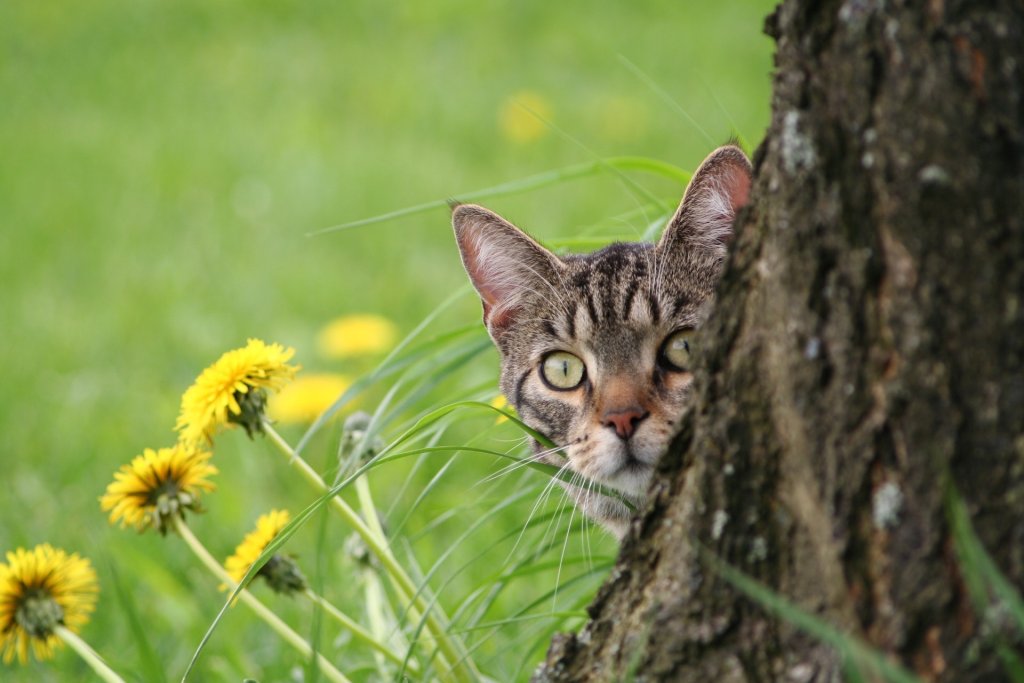
Besides helping your cat with their nutrition and digestion, cat grass comes with a bunch of health and safety benefits too:
It encourages your indoor cat to get a nibble of the outdoors
…which itself comes with a ton of perks. Supervised outdoors time can help your indoor cat benefit from the exercise, natural sunlight, and the sensory stimulation. Plus, you can help keep their natural hunting and exploring instincts sharp.
It prevents your outdoor cat from invading your neighbors’ gardens
…and taking a hefty mouthful of their houseplants or flowers – which might be sprayed with pesticides or other harmful chemicals. Outdoor cats tend to have sizable territories to patrol and defend, which might include multiple neighborhood backyards and even the local park. Which can increase their risk of accidentally ingesting a plant or grass that might be poisonous for them.
In this way, investing in cat grass helps you nurture your cat’s natural independence, curiosity, and evolutionary behavior. And if you’re worried about them venturing too far outdoors, you can always invest in a dedicated cat GPS tracker to get real-time updates on where they are every 2-3 seconds.

Know everywhere your cat goes
See where they are in real-time, no matter how far they go. Get alerts if they roam too far home. Find out where they’ve been and discover their favorite spots. Let others track with you.
How to create your very own cat grass garden at home
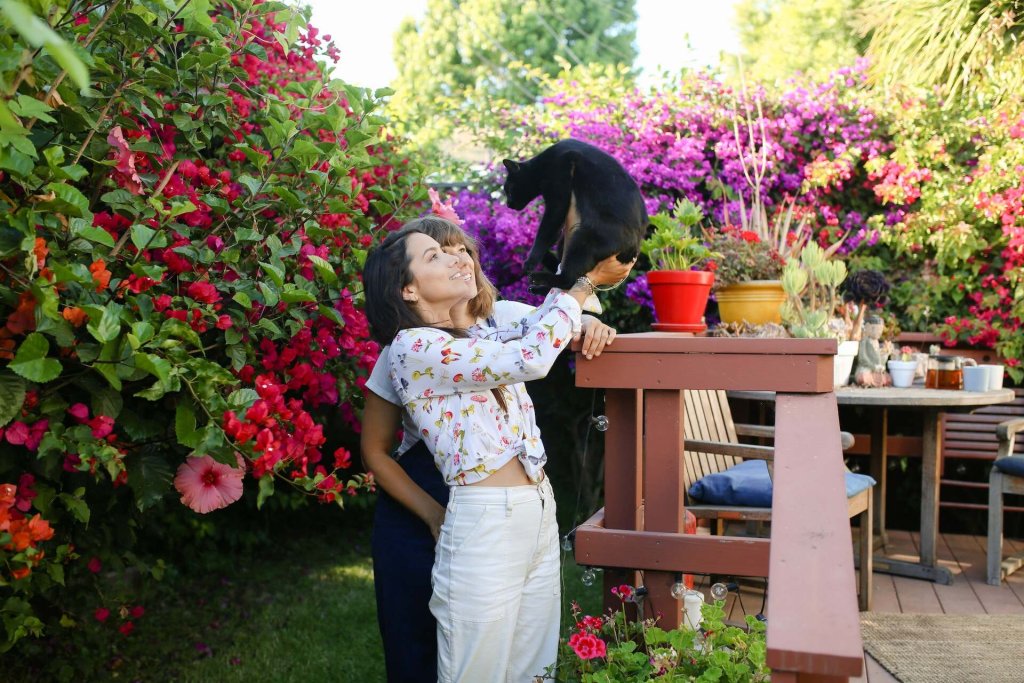
Now if you’re thinking of planting your very own cat-friendly garden, it makes sense to fill it with safe, non-toxic, cat-friendly plants. But if you (and your cat) have your your heart set on cat grass, here’s how you can get started.
Choose an easy, low-maintenance grass
Cat grass is generally easy to grow, but for busy cat parents, oat grass is an excellent, time-saving option. It grows faster than other grasses, which makes it a great snack for your cat. So head on over to your local garden center or pet store and pick up some seeds. (Just be sure to double-check the label and keep an eye out for any weird ingredients.)
Pick a simple container
You can use a pot, tray, or even a shallow dish for your cat grass. Just make sure it has drainage holes to prevent water from gathering (as this might cause mold or mildew.) If your container has a lid, it can help the grass retain moisture and grow quicker.
Add soil
Whether it’s potting soil or soil mixed with sand, both work. Fill your container to about three-fourths full and add a little bit of water.
Plant the seeds
Sprinkle your seeds evenly over the soil. Make sure they’re not too close together. Cover them with a thin layer of soil and press down gently.
Water the soil
After you’ve planted the seeds, water the soil gently to help it settle. Then cover your container with a plastic wrap or lid to keep the moisture within.
Get some sun
Place your container in a location that gets some natural sunlight, like your kitchen windowsill.
Continue watering
Over the next few days, continue watering the soil gently to keep it moist. Be mindful of how much water you’re pouring as the grass begins to grow. You want to avoid making it too dry or too wet. If you notice any mold or mildew from too much water, just remove the lid and allow the soil to dry out by itself before you water it again.
And tada! Within a week or so, you’ll have a lovely pot of cat grass that’s grown to around 3-4 inches. The perfect fiber-rich snack for your feline friend.
What is a good alternative to offering cats eating grass?
Now that you know why cats eat grass (and throw up grass), you know they’re just keeping themselves healthy.
However, safer is always better. That’s why, as mentioned, it’s a good idea to look into cat grass, which is definitely safer and can satisfy your cat’s appetite for grass.
If your cat has a habit of wandering far from home, looking for snacks, then it’s a good idea to keep track of them with the help of a GPS cat tracker.
You’ll also be able to see where they’ve been on the map, which can help you mark out areas to watch out for.
Top reasons why your cat is eating grass
Simply put, cats eat grass because it comes naturally to them. It’s an instinct ingrained in them long ago by their ancestors. Eating grass has a number of health benefits, which helps to explain why even our domestic kittens like to munch on the green stuff.
A quick summary of why your cat is eating grass, you say? You’re welcome 😉
Like what you’ve read? Share it with your cat-loving friends!
